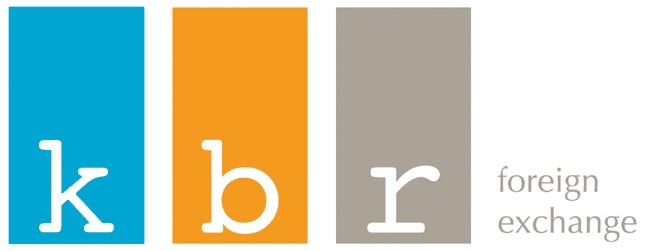Price action on the British Pound was choppy yesterday as UK consumer inflation data caused a mixed reaction among foreign exchange traders. Inflation in May came in line with expectations; holding at 4.5%. This result was unchanged from April’s reading, which was the fastest pace of price growth since October 2008. Core inflation eased from 3.7% to 3.3% over the same period, missing expectations to slow to 3.5%. The drop in core prices leaves some traders speculating that the Bank of England will maintain its dovish policy. As rate hike expectations decreased, the GBP/USD exchange rate pulled back from its high of 1.6441 to 1.6377. The less influential retail price index also saw annual price growth remain steady at 5.2%.
Employment data headlined the UK docket this morning, with forecasts calling for the number of people seeking jobless benefits to rise in May by 6,500 individuals. However market participants were disappointed when official figures revealed that the number of jobless claims rose by 19,600 and the previous month’s increase of 12,400 claims was revised up to 16,900. The news is a hard knock to the UK jobs market and comes amid Government spending cuts to the NHS, Police and Armed Forces. The surprise increase in claims however did not affect the claimant count rate, which remained at 4.6% or the ILO Unemployment rate which held at 7.7%. The Pound fell against the Euro to 1.1350 and to 1.6312 versus the US Dollar, making the currency exchange market less viable for buying Dollars and buying Euros.
In the Euro-area, finance chiefs remained divided yesterday on how to involve private investors into the Greek bailout program, while at the same time keeping the European Central Bank happy. Finance ministers were under increased pressure as the International Monetary Fund (IMF) has recently threatened to withhold their share of the original bailout package if a compromise cannot be reached, and further to this Standard and Poor's lowered the nation's credit rating to CCC. Ministers closed the meeting without coming up with a solution; however, the group has imposed a dead-line of 20th June for an agreement to be reached. Luxembourg’s Finance Minister Luc Frieden remained optimistic that a solution would be reached before the deadline saying, “it’s not exceptional at an informal meeting not to have a decision. But the goal is clearly to have a solution by the end of the month.” The lack of an immediate solution saw the Euro weaken and fall back from its earlier highs; the EUR/USD exchange rate heading back towards 1.4440 and GBP/EUR retracing to levels above 1.1330.
Meaningful economic data will be thin on the ground for the Euro-zone today, meaning Euro traders will have to focus on the Euro-zone Industrial Production figures for price direction. Economists forecast that production will have cooled in April from an annualised rate of 5.6% down to 4.8%. This predicted slowdown in production will most likely weigh on the Euro which is already struggling against the as yet unresolved sovereign debt issue.
Yesterday's US Advance Retail Sales for May showed that consumer spending contracted by 0.3% amid speculation that sales will plummet by 0.5%. The decline in sales was to first to be recorded in 11 months and followed a downwardly revised increase of 0.3% in April. While the contraction in sales was weaker than expected the news still casts a poor light on the US economy. At the same time May’s Producer Price Index (PPI) increased expectations that the Federal Open Market Committee (FOMC) will raise interest rates later this year, when prices grew by 7.3% annually to beat expectations for price growth to remain stable at 6.8%. With inflation on the rise the Federal Reserve will be expected to act with an interest rate hike and curb price growth before it gets out of hand, and it is with this expectation that the US Dollar enjoyed a brief rally against both the Euro and the Pound.
Off the economic docket, Fed Chairman Ben Bernanke urged the US Congress to raise the debt ceiling citing that failure to do so could lead to credit rating downgrades and damage the treasury market. The Fed Chairman said that even a brief period of delay on the Treasury’s debt obligations could, “cause severe disruptions in financial markets and the payment system.” Earlier in the month, Moody’s Investor Services warned that the US could have its AAA credit rating placed under review unless Congress took steps towards compromising on raising the $14.3 trillion debt ceiling. At present the issue is that Republicans refuse to raise the debt ceiling unless the Democrats agree to sever spending cuts, but Bernanke has warned that the debt ceiling is the “wrong tool” for lowering the nation’s budget deficit.
Looking ahead the Consumer Price Index (CPI) is expected to have risen in May by 3.4% up from 3.2% in the previous month, while the core index is expected to see a more modest increase from 1.3% to 1.4%. With yesterday's PPI showing a greater than forecasted increase in price growth its highly likely that the CPI reading will exceed the consensus as higher production costs are often passed onto the consumer. As mentioned earlier higher inflation will most likely stoke expectations the FOMC will raise interest rates to keep inflation in check and thus the foreign exchange market could see a rally on the Dollar. Later into the US session the Dollar could see further potential gains when June's Empire Manufacturing index and more importantly May's industrial production figures are announced. Both sets of data are predicted to show improvements in manufacturing and production from the previous month's readings, with the Empire figure rising from 11.88 to 12.00 and industrial production is set to rise by 2% following a month of stagnant growth.


No comments:
Post a Comment